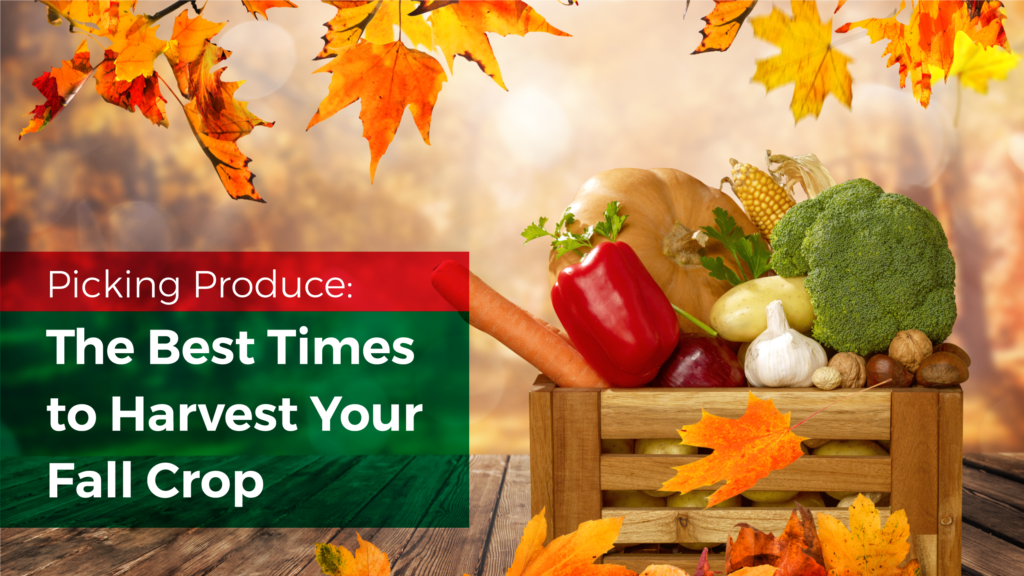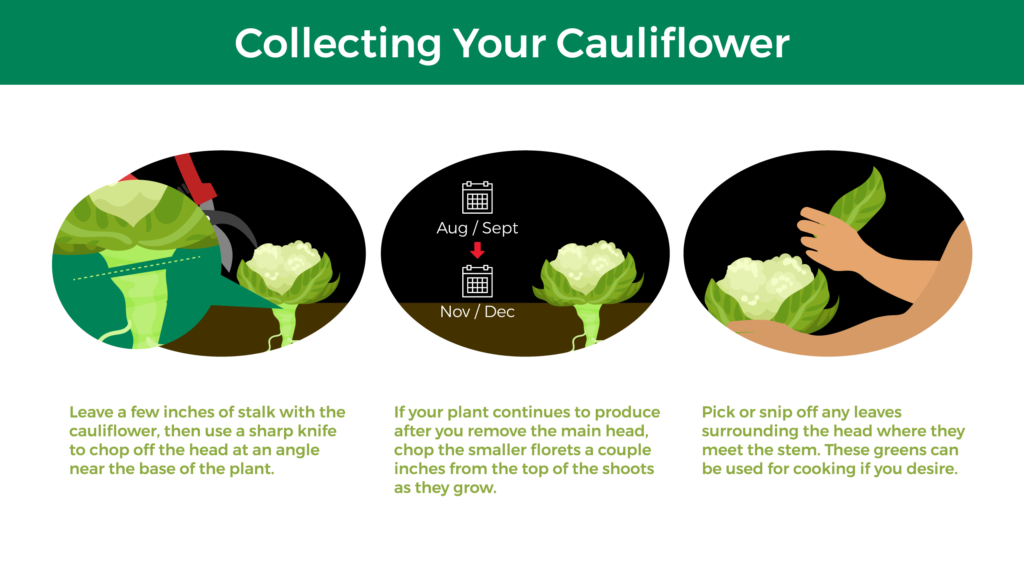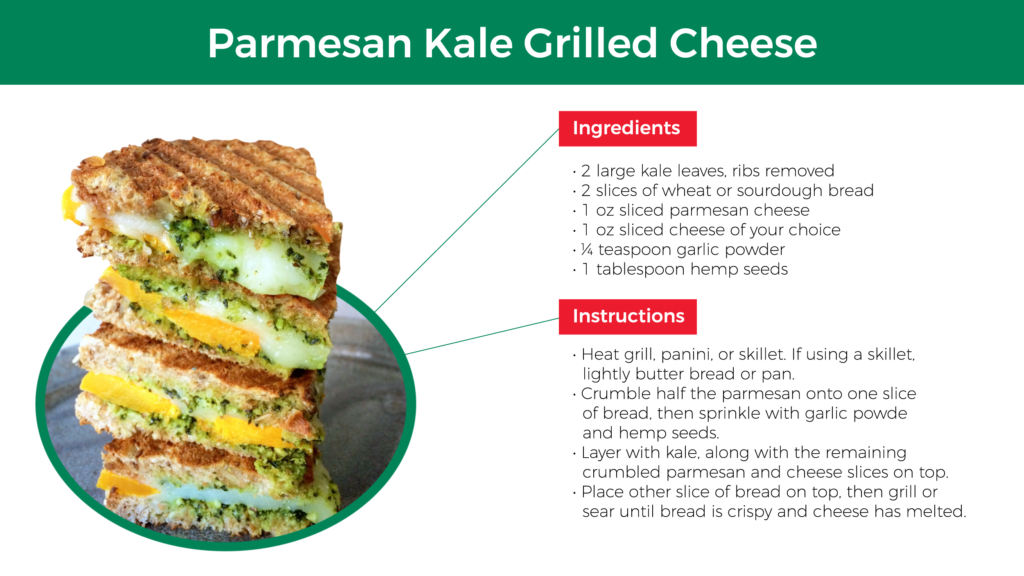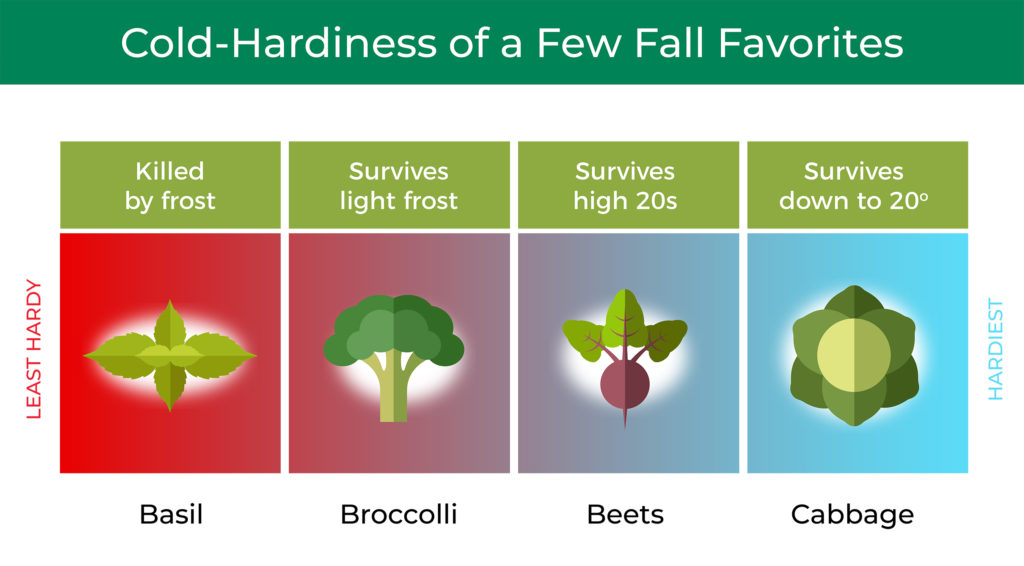Peak gardening season might be over, but the crops don’t stop for fall weather. Plenty of produce comes to fruition during the fall and throughout the winter, and once they reach the harvesting stage, you’ll have to know how and when to pick them. This will depend on the climate in which you live, but there’s one thing to always keep in mind: frost date. Plant growth slows as temperatures drop, so generally speaking, your vegetables should be mature by the first frost in your area. However, signs of ripeness among vegetables vary, as well as their harvesting and preservation techniques. To help navigate gardening this time of year, here are some fall harvesting tips for your favorite backyard veggies so you can enjoy them at their peak.
Bigger Is Not Always Better
Don’t be fooled by most of the produce you get from the grocery store: The biggest are not necessarily the healthiest or tastiest. In fact, many of your yields, such as zucchini and potatoes, will reach peak tenderness and flavor before full maturity. Plus, a smaller vegetable will have the most concentrated level of nutrients.
As temperatures drop, however, keep in mind that your plants grow more slowly and thus need plenty of time to mature before any severe weather. Harvest often – every day if you can – while avoiding wet conditions. This not only ensures tastier and higher-quality produce but also encourages a larger yield.
Know How to Pick ‘Em
So, what are the signs of ripeness for your veggies? Of course, optimal growing and harvest seasons are climate-dependent. Moreover, some plants are quick-maturing, while others aren’t as eager to leave the ground and can even make it through the winter.
Whatever and wherever you grow, prevent damage and be prepared with proper harvesting tools, like sharp knives and pruning shears. Equally important are proper preservation supplies like cans, jars, food dryers, or vacuum sealers. Here’s your crash course in harvesting a handful of common fall crops.
Cauliflower
Being a half-hardy vegetable, cauliflower fares well outside until there’s a severe frost, which can present a challenge if their heads, or curds, aren’t mature before then. To play it safe, you should harvest after a deep freeze – but as it is a cold-weather plant, frost will improve its flavor until that time comes. To avoid discoloration and bitterness from sunlight exposure, consider blanching the cauliflower to shield from the sun and whiten the head. When it’s approximately 2 to 3 inches in diameter, or about the size of a tennis ball, gather a few large surrounding leaves and secure them loosely around the crop. Then, it should be harvest-ready within the next couple weeks. If a flower sprouts from your plant, you’ve probably waited too long.
Keep a close eye on your cauliflower; if it becomes too mature, the final product will be grainy. Pick once the curds are a creamy-white color, the leaves are bright green, and the head is full, firm, and compact. A diameter of 6 to 10 inches, before the head begins to separate, usually indicates that it’s full enough for picking.
How to harvest cauliflower:
- Cut cauliflower from the main stem with a sharp knife. Continue harvesting any smaller heads that grow where you made your cuts.
- Remove any leaves surrounding the head, which you can either dispose of or use for cooking.
- Bring them inside, soak the heads in salt or vinegar water for about 20 minutes, then rinse to expel any pests.
- Refrigerate or freeze in an airtight plastic bag.
Carrots
Join the (Vitamin) A Team and know how to get the most out of your carrots. Begin pulling them when you see that they’ve developed fullest color. As you might guess, baby carrots need less time than mature carrots, so harvest dates range anywhere from 50 to 100 days depending on your desired size. When the tops measure half an inch to 1 inch in diameter, that indicates a good time to pick them. If you’re unsure, a quick taste test can help you out: Uproot a couple and take a bite to make sure they’re sweet and crisp. Wait until the tops have endured several frosts if you’re looking to harvest for winter, as cold weather enhances their sweet flavor.
Carrots are perfect to produce well into the fall months, but it’s crucial that you pull them all before the ground freezes solid – unless you decide to insulate them with straw or mulch for overwintering.
How to harvest carrots:
- Gently pull at the carrot tops that have emerged from the soil, grasping the root and not the leaves. You may also use garden tools to easily loosen the surrounding soil and ensure no tops break off.
- Grab the greens or any exposed area at the top and pull firmly.
- Before storing, brush off the dirt, remove all tops and greens, and air dry to remove surface moisture.
- Store in a cool, dark place, preserved in a container of sand (before peeling) or refrigerated/frozen in a plastic bag with holes (after peeling).
Kale
As one of the hardiest members of the garden, kale is a leafy and nutritious addition to all kinds of dishes, from salads to stir-fries to soups. And lucky for you (and your stews), it can continue growing in temperatures as low as 20 degrees and tastes sweeter during cool and frosty conditions – just make sure to harvest the entire plant before it’s killed by the freezing cold.
You may begin picking baby greens 20 to 30 days after planting, but don’t go overboard, or else the kale won’t mature properly. Otherwise, it’s standard to wait 70 days or so after seeding to harvest, or when the plant is 8 to 10 inches tall with leaves about the size of your hand. The smaller and more tender leaves have a milder flavor, ideal for eating uncooked in salads, whereas larger foliage is better to cut and cook, like spinach.
How to harvest kale:
- Start cutting or snapping individual leaves off the main stalk from the bottom, then move upward.
- Do not pick the foliage from the very top or from the terminal bud (top center), which could compromise future productivity.
- Instead, harvest about a fistful of outer leaves each time.
- To encourage growth throughout the winter, cover the soil with mulch or a protective blanket after the first major freeze.
- Rinse under cool water, remove stems, and let the leaves air dry.
- Keep refrigerated in an airtight plastic bag and use within one to two weeks.
Potatoes
When it comes to your homegrown potatoes, harvest time depends on whether you’re eating them right away or storing them away for the winter. “New potatoes,” with a smaller size and tender skin, are dug up earlier than mature potatoes – about two to three weeks after the plants stop flowering. These should be eaten within a few days. Mature storage potatoes, however, should be harvested two to three weeks after the foliage has died back. They store better and longer when left in the ground to allow their skin to toughen and starchy flavor to develop. Although these crops can tolerate light frost, you should shovel them up before the first hard frost.
In general, choose small to medium potatoes with smooth skin, without blemishes or soft spots. For those you won’t eat right away, skins should be thick and firmly attached to the flesh; if the skin rubs off easily, the potatoes are still new and should remain underground longer.
How to harvest potatoes:
- Use a shovel or garden fork to dig into the outside edges of the plant.
- Lift carefully and grab all the potatoes you want to harvest.
- Cure mature potatoes afterward by letting them sit in a cool, dark, and humid area of 45 to 60 degrees for a couple of weeks. This helps the skins harden and heal.
- Store the cured crop in a dark place of approximately 40 degrees, like a garage or refrigerator, and never allow them to freeze.
- Do not wash until right before use.
Know When the Time is Ripe
As for other late-season vegetables not mentioned above, the first step to timing your harvest is knowing how much frosty weather they can survive. Some will be killed by frost altogether, while others can thrive well below freezing temperatures. Ranging from basil to cabbage, know where your fall crops lie on the frost-tolerable scale.
Getting the Most Wholesome Harvest
Nothing keeps you warm amid winter winds quite like a soup, stew, or other meal straight from your fall garden. While peak-season may be over, your garden can keep thriving with the right crops and cold-weather accessories to protect your plants from harsh conditions, as well as garden fertilizers to keep them in top shape, no matter the season.



